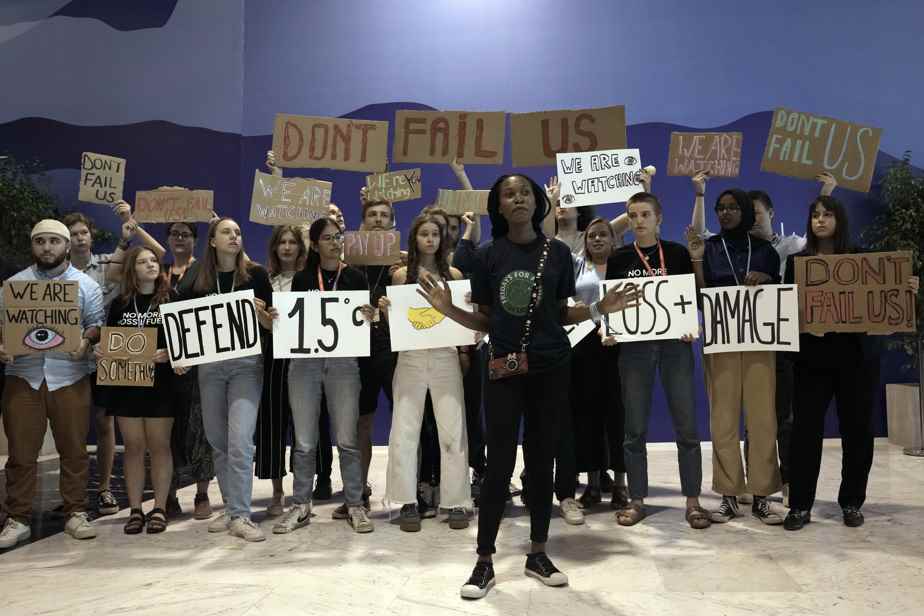A last-minute agreement was reportedly reached at COP27 in Egypt to support poor countries affected by climate change. Such an agreement would be “a historic moment,” says the Climate Action Network Canada.
This agreement would allow the creation of a fund for the poorest countries which bear the full brunt of the consequences of climate change when they have contributed very little to global warming since the pre-industrial era.
Sherry Rehman, Pakistan’s climate change minister and current chair of the powerful G77+China negotiating group, which includes more than 130 countries, told Agence France-Presse that she was “optimistic about a positive outcome” on that question.
“From the perspective of the African continent, we are absolutely delighted if this decision is approved”, welcomed Barbara Creecy, the South African Minister of the Environment.
The economic costs of these losses in developing countries are estimated at between $250 billion and $580 billion by 2030, says the Climate Action Network. According to the International Federation of Red Cross and Red Crescent Societies (IFRC), extreme weather events have killed over 410,000 people and affected 1.7 billion over the past decade.
If ratified by the delegations of the 200 countries present in Egypt, this agreement would constitute “a historic moment”, affirms Caroline Brouillette, director of national policies at the Canada Climate Action Network. Present in Sharm el-Sheikh, Mme Brouillette recalls that developing countries have been asking for the establishment of such a fund for several years to help them deal with the consequences of climate change.
The proposal on the table proposes to establish “new financing arrangements to help developing countries” to “mobilize new and additional resources”. This would make it possible to “create a loss and damage response fund”, the operation and financing of which will have to be developed by a “transition committee” by the next COP28 in the United Arab Emirates in 2023.
It should be remembered that the rich countries had been very reluctant for several years about the idea of such financing, but the European Union made an overture on Thursday by accepting the principle of a “loss and damage response fund”, reserved for “more vulnerable” on an “enlarged contributor base”, implied to China, which has become considerably richer in 30 years.
If the agreement were confirmed, it would somehow save this 27e conference on the climate which announced itself a failure until Saturday morning. “Rather not agree than a bad agreement”, had also indicated to the media the vice-president of the European Commission, Frans Timmermans.

PHOTO PETER DEJONG, ASSOCIATED PRESS
“We are worried about some of the things we have seen and heard over the past 12 hours,” Commission Vice-President Frans Timmermans told reporters.
“We are worried about some things we have seen and heard in the last 12 hours,” he added, recalling that the Europeans’ objective was to keep the warming limit of 1 “alive”, 5°C, the most ambitious goal of the Paris Agreement.
The final text proposal submitted on Friday reaffirms the objectives of the 2015 Paris agreement which aims to limit global warming “well below 2°C” compared to the pre-industrial era, and if possible to 1, 5 degree.
The text also underlines that the impacts of climate change would be much less significant at 1.5°C and shows the importance of continuing the “efforts” to respect this limit.
However, to achieve this, the world should reduce its GHG emissions by 45% by 2030. According to the latest official forecasts, they should instead increase by 10% by the end of the decade.
“We need an agreement on 1.5°C. We need strong text on mitigation measures [réduction des émissions] and we are going to push for that,” Ireland’s Environment Minister and EU Negotiator Eamon Ryan said on Saturday.
Thursday, the concentration of CO2 in the atmosphere peaked at 417.37 parts per million (ppm), up 2.35 ppm year-on-year. According to the Intergovernmental Panel on Climate Change (IPCC), this should not exceed 350 ppm in order to limit global warming to 1.5°C compared to the pre-industrial era.
The current commitments of the various countries are far from enabling the 1.5°C objective to be met. According to UN analyses, they allow at best to limit warming to 2.4°C by the end of the century, leading humanity towards the risk of irreversible tipping points being reached and causing an uncontrollable runaway of climate change.
With Agence France-Presse
